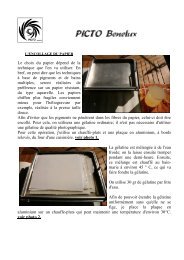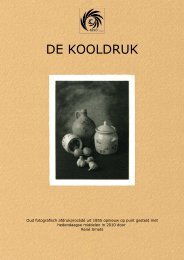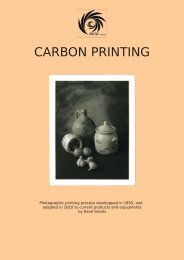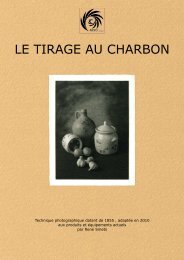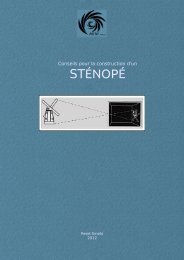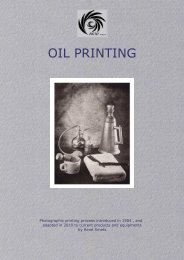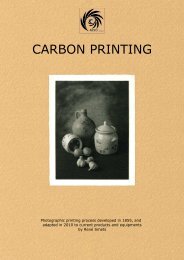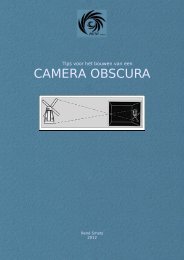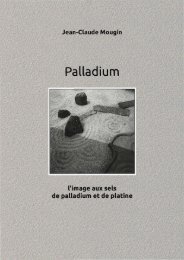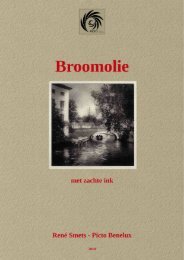Jean-Claude Mougin (pdf) - Picto Benelux
Jean-Claude Mougin (pdf) - Picto Benelux
Jean-Claude Mougin (pdf) - Picto Benelux
You also want an ePaper? Increase the reach of your titles
YUMPU automatically turns print PDFs into web optimized ePapers that Google loves.
4. The Aura<br />
Walter Benjamin was a perfect witness of this disenchanted world, a world of<br />
desolation where the gods have fled, and of the collapse of the sacred. His slogan<br />
is well known: facing the increasing risk of politics aestheticization, it is urgent to<br />
politicize art. Faced with the danger of an imaginary serving the established<br />
authorities, it is important to return to the images their power of changing the<br />
world.<br />
Hence the importance of Benjamin's symptomatic reading of the history of<br />
photography which repeated, in the time span of a century (we are in 1936) and in<br />
a surprising shortcut, several millennia of pictures' history.<br />
This history has three key moments:<br />
1. a golden age, that of the photography primitives, such as the first calotypists<br />
Hill, Bayard, Hugo, and the great portrait painters that were Nadar and Julia<br />
Margaret Cameron. The photographic image shows all the characteristics of the<br />
idol, and the strangeness of its appearance, its "aura".<br />
2. an age of popularisation and industrialization. The image becomes a<br />
commodity (Disdéri) dedicated to a middle class, hungry for "trivial images," in the<br />
words of Baudelaire.<br />
For Benjamin, the return to art for the sake of art advocated by the pictorialists in<br />
response to this popularisation, is only leading to a stalemate . The aura becomes<br />
nothing more than a pretense.<br />
3. Arrives the redeeming moment, the end of the bourgeois illusions. Exits the<br />
picturesque, Atget invents the aesthetics of vacuum, "the crime scene." Exits the<br />
portrait, the "trivial image"; Sanders doesn't create a picture book, but an "atlas of<br />
exercises." Exits photography as art, making room for "art as photography."<br />
4. Finally, the line is clear for the project to politicize art. "Art must unmask and<br />
build." This will be the programme of Moholy-Nagy, Rodchenko or Eisenstein.<br />
Thereby the history of photography at the age of mechanical reproductibleness<br />
actually is the symptom of the world's uniformization and standardization<br />
process, which is a property inherent to all mercantile societies. Its terminus is the<br />
"liquidation of the aura".<br />
The aura of a work is what happens "here" to the work in its beauty. But this<br />
"here" remains inaccessible, because as said by Goethe, "the beautiful is what, in<br />
essence, only remains similar to itself provided it stays veiled". Such is the<br />
weirdness of the work of art, summarized by Benjamin as follows: "What is the<br />
aura, strictly speaking ? A singular frame of space and time: a unique appearance<br />
of the distant, as close as it might be".<br />
Therefore the artwork exists, in its authenticity, in what's giving it the<br />
"authority of the thing" and yet "reality does not allow itself to be reached "<br />
through it. Its dimension is the sacred.<br />
7



